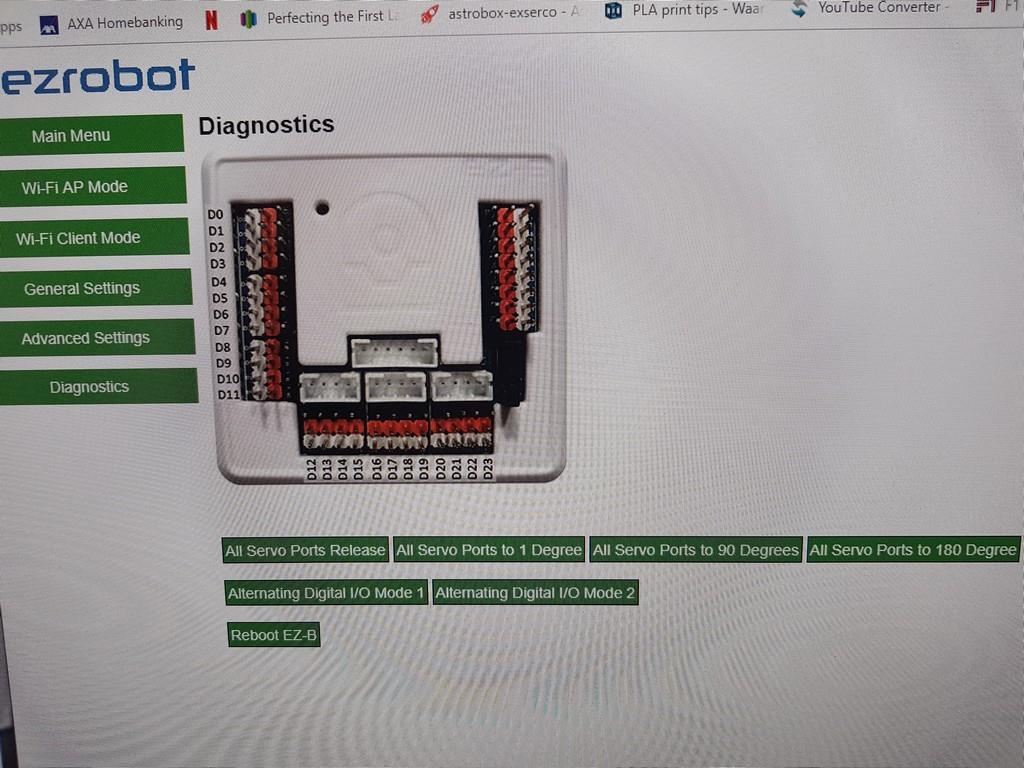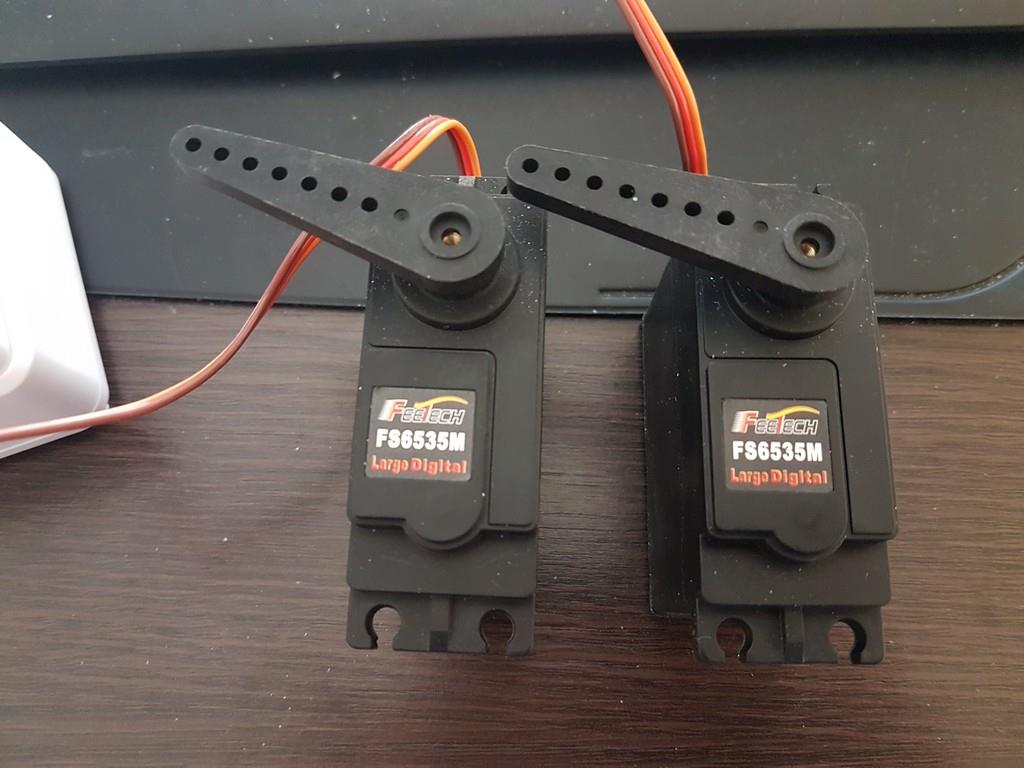Hi all, I'm new into EZB and electronics, so looking for a bit of help.
I own a EZB4/2 to control my Inmoov project. For the head I need a strong servo, so I've got a Feetech FS6535M. (https://www.robotshop.com/en/fs6535m-giant-scale-servo-motor-cw-rotation.html) When attached to the EZB and trying this to go from 0 to 180 degrees, I've found that on both sides I didn't get the full stretch. Trying to find out what was wrong, I searched the net further and found this: (https://www.robotshop.com/community/forum/t/fs6535m-servo/27951)
quote: We just tested it to make sure and yes you can have a full 180deg with signal from 500us to 2500us. unquote
When i went looking for more info on EZB, I found this: (https://synthiam.com/Community/Tutorials/48?courseId=1#part1a)
quote: The EZ-B has timing below 1ms and above 2ms to accommodate all servo types. Some servos do not fall within the specifications and require unusual timing. When testing with your servo, make sure you recognize the max and min values and set them in the control. unquote
500 us = 0.5 ms 2500 us = 2.5 ms
So I think it might be due to EZB that I'm not getting the full 180* stretch.
1/ is my "logic thinking" correct? 2/ is there a way to adjust this or do I need other servo's?
Thank you all. Have fun with your robot projects.



The ezb follows standard servo pwm specifications for the range, which you quoted. These servos you’re referring to simply exceed that range. While the manufacturer provided the range in their response, still doesn’t make it right. By exceeding the range, all servo hardware that is designed for standard servo specifications will not provide full range.
The ssc does not have finer resolution. Instead, it had a configurable resolution to accommodate these scenarios. This is because the ssc is a dedicated servo controller, and that’s all it does - so it can provide user configurable ranges. And therefore, should be used for your application.
The ezb supports that controller and contains a native plugin to do so. Have fun and build that robot!
and build that robot!
Ps, you can know more or as much as anyone that you talk to about servos by reading our introduction manual. It contains videos explaining servo pwm and provides a lot of detail. We take a ton of effort to above and behind what anyone else explains. Here’s the direct link: https://synthiam.com/Tutorials/Lesson/48